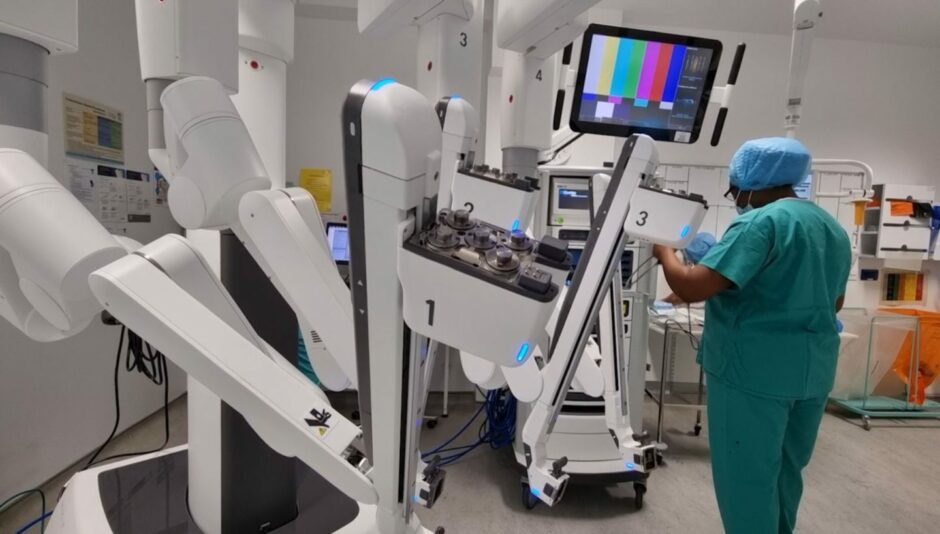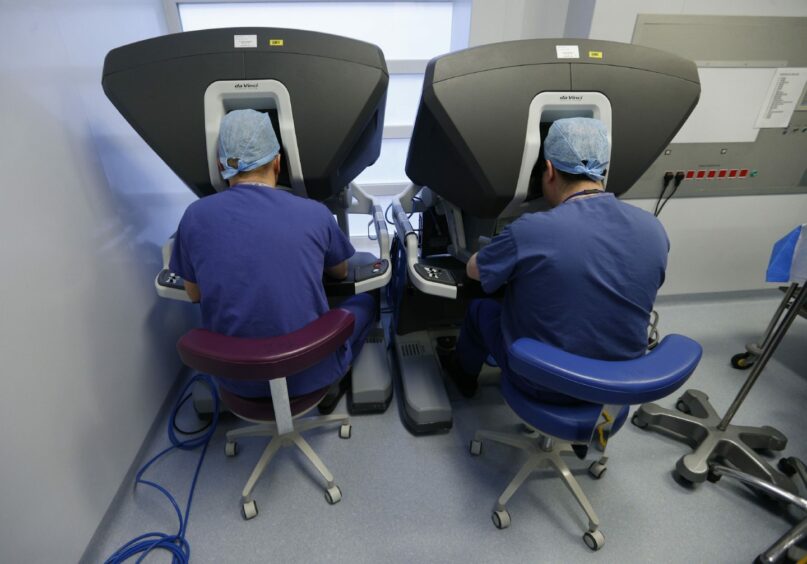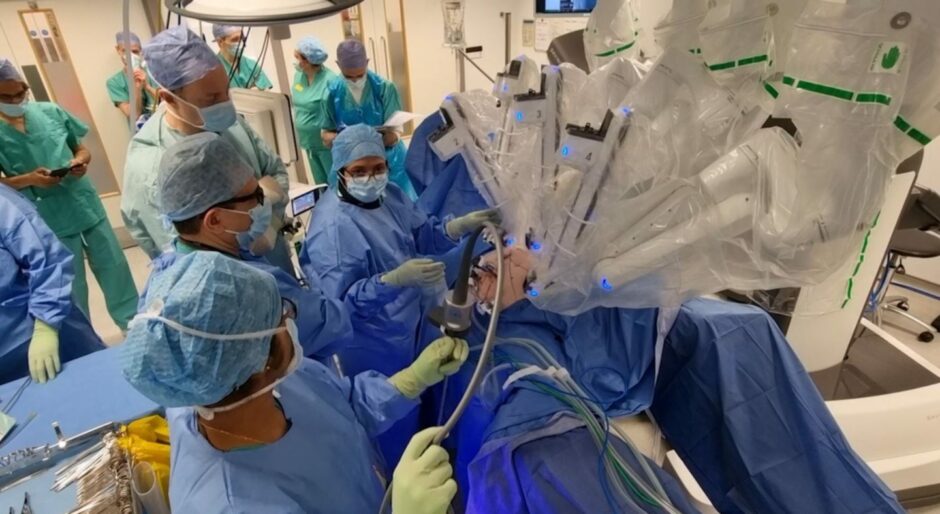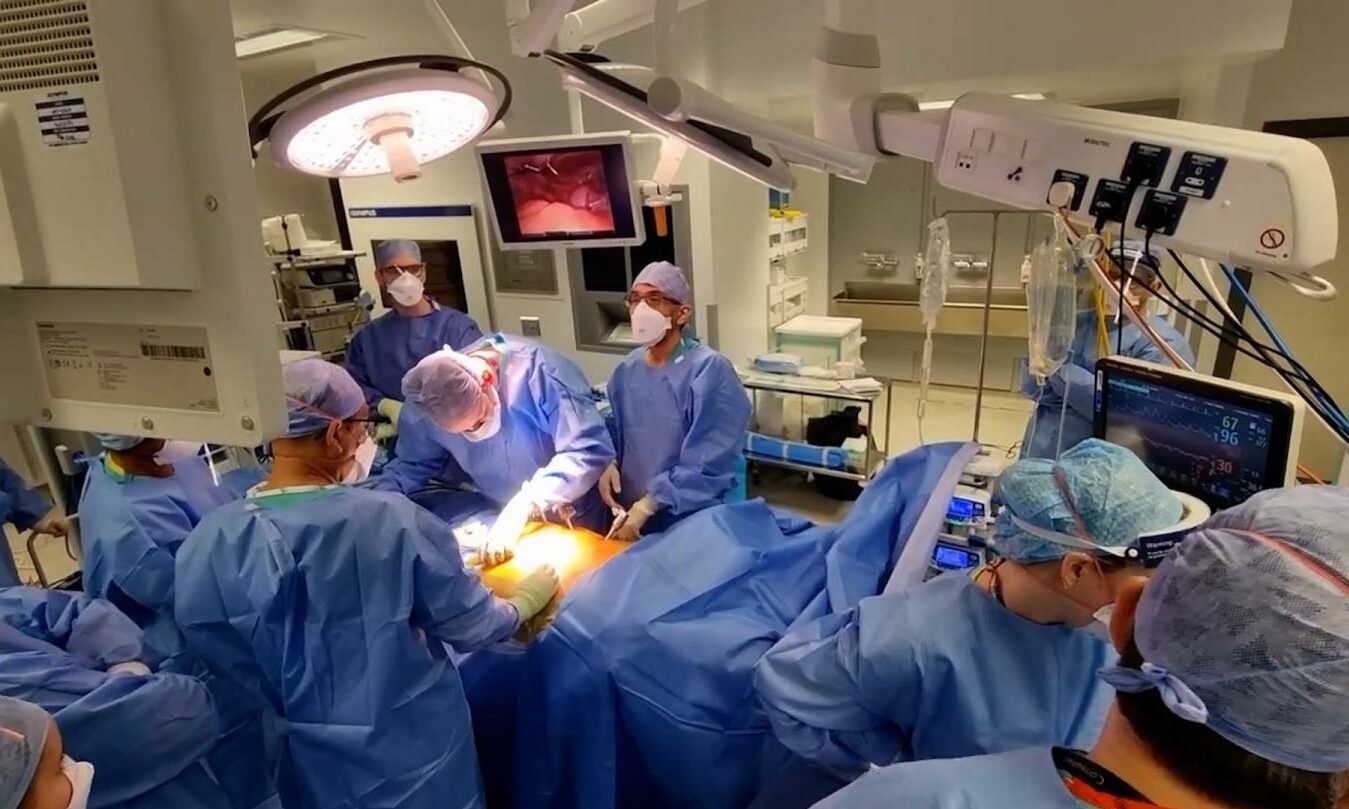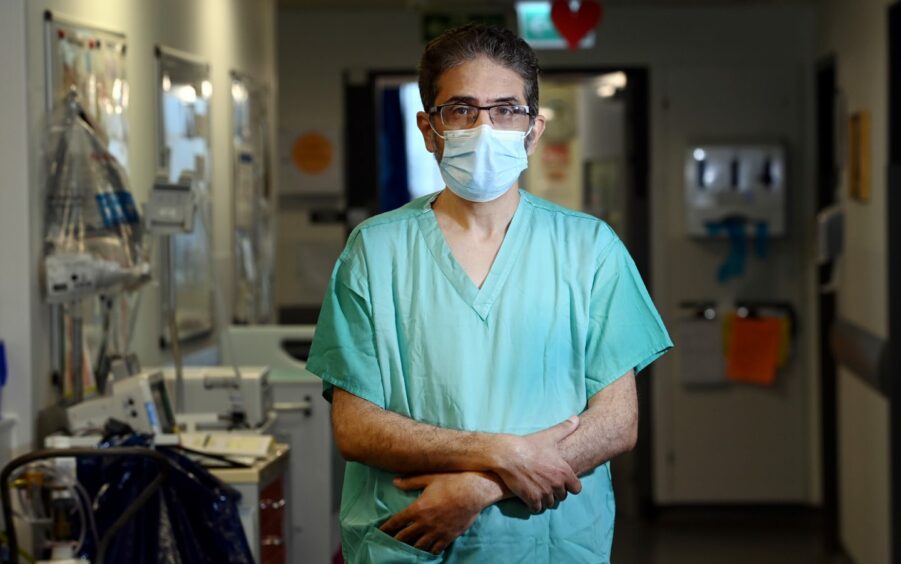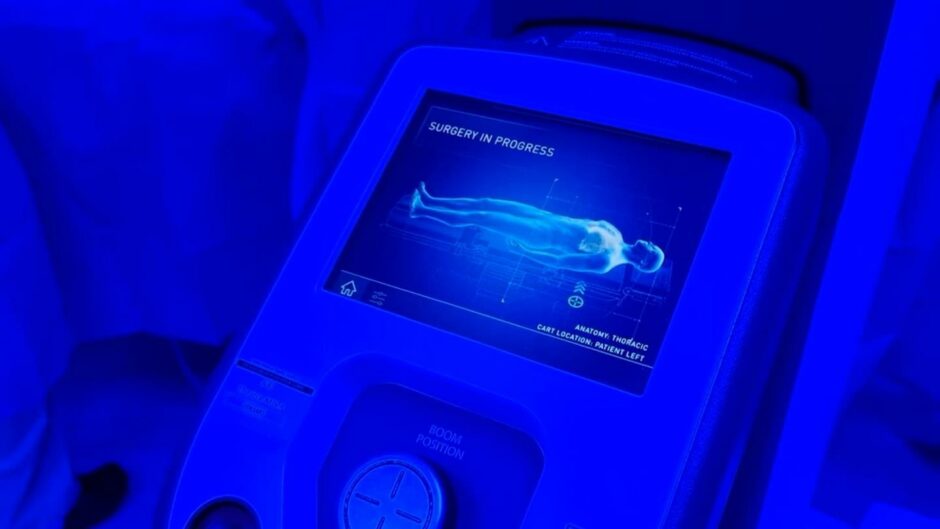The words “robotic-assisted surgery” conjure up thoughts of high-tech sci-fi films – but is the reality just as incredible, and how do patients feel about it?
While the procedures are a little more muted than something from The Fifth Element, each is just as fascinating to witness.
When Mohammed Wesam Khalil, cardiothoracic surgeon at Aberdeen Royal Infirmary, takes his place at a console that looks like it came straight from the set of Tron, there’s a sense in the room that something extraordinary is about to happen.
The real wonder of these machines isn’t so much their resemblance to a Hollywood prop, but the opportunity to help patients recover faster – reducing waiting times and shortening hospital stays.
With cutting-edge technology like this at the north-east’s fingertips, health chiefs are hopeful they will attract other medical professionals who might want to practice in Aberdeen.
Ana Da Silva was the first journalist allowed into NHS Grampian’s robotic operating theatre to watch how “the future” of surgery is changing lives.
What is robotic-assisted surgery?
If you’re ever eligible to have a robotic-assisted surgery, the first thing you need to know is: a robot will not be performing your procedure.
Instead, a highly-trained team including your surgeon will be in the room, using a robotic system to help carry out the operation.
A high magnification 3D camera gives the surgeon access to see clearly inside your body.
This is attached to one of several arms on the robot – NHS Grampian’s Da Vinci XI has four – then inserted through small incisions, called “keyholes”.
Various instruments are held by the other arms and help with the operation, all operated via the surgeon’s console using hand and foot controls.
Patients deemed eligible for these surgeries by their medical team have a minimally invasive operation that result in less pain and a shorter stay in hospital.
Quicker, less painful recovery
NHS Grampian became the first Scottish health board to introduce a robotic-assisted surgical system in 2015.
And in April 2021 it announced the arrival of three new machines as part of a £3.5 million spend to improve patient care and slash waiting times.
Staff have already noticed huge improvements and shorter recovery times, and two patients have told us about their first-hand experiences.
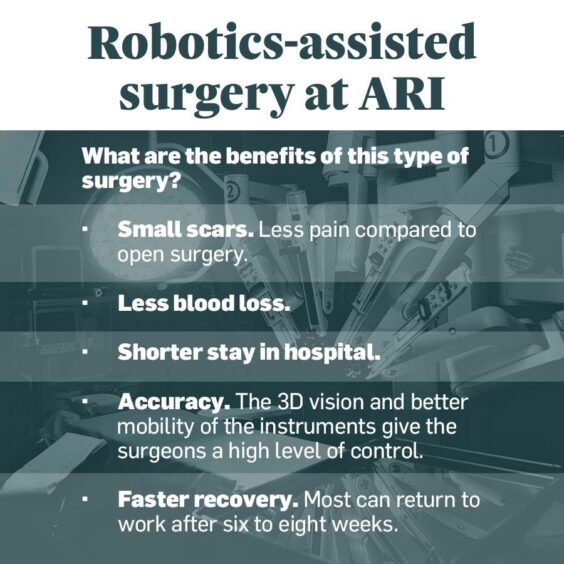
“Patients get better quicker and stay in hospital for a much shorter period of time,” the health board’s deputy chief officer for the acute sector, Cameron Matthew, explained.
“The less invasive surgery that we do, the better for these patients.
“Whether it’s simply from having fewer painkillers postoperatively to, more importantly, getting them home and back to their normal lives quicker.
“That’s got to be the number one priority.”
‘If I had been opened up, I would have been far worse’
Sitting in on James Findlay’s procedure, we learned that they would be operating on his thymus gland, a lymphoid organ located in the chest between the lungs.
After a CT scan, the 38-year-old engineer from Moray, said doctors had spotted a tumour the size of a grape in close proximity to his heart.
“And because of that, and because they didn’t know what it was, they thought the best thing to do was to remove it,” he told us, a few weeks after the procedure.
During an initial meeting with Mr Khalil, he was told there was a possibility to undergo the operation with a robot.
“It was sold to me that the robot was far more accurate, less room for error,” he added.
“I was told recovery time would be quicker than if it was done conventionally ; that it would be done through keyhole instead of opening my chest up.”
The night after his surgery – mere hours later – James was already able to sit up in bed, and could walk to the toilet by himself while nurses looked out for him.
By the next day, he was able to bathe himself and walk around – even if he was still a little wobbly.
“I think if I had been opened up, I would have been far worse,” he added.
“I was admitted to hospital on the Tuesday, operated on on the Wednesday and I was discharged on Monday. That’s pretty fast, to be honest.”
‘Everybody seemed to be excited’ for op
Henry Lyons, 73, travelled to Aberdeen from Dundee after being told he was eligible for a robot-assisted surgery.
He spoke to us the day after having the top third of his right lung removed.
Previously, while undergoing a scan, staff noticed a “shadow” over the organ.
But due to the positioning of the area that medics believed to be suspicious, a standard biopsy wasn’t possible for Henry.
The surgeon told him the Da Vinci XI robot would be ideal for the procedure – and that he’d feel considerably less pain while recovering.
“I’m not averse to technology and I was quite excited,” he said.
“Everybody seemed to be excited – so was I.
“One of the big advantages was that, not only would it be more precise, but the actual pain of the patient is considerably less, which seems to be the case.”
Henry was out of bed, sitting, and talking while he described his experience with the robotic-assisted procedure.
‘Robotic surgery will be the future’
Mr Khalil had to complete a particular training scheme before getting the green light to start operating on patients with the technology.
It consisted of online modules and hands-on training with representatives from the robot’s manufacturers.
He also visited other hospitals in the country that provide robotics-assisted surgery to observe and learn from them.
And for the first cases he took on, a surgeon experienced with the robot had to be present to ensure the operations ran smoothly.
“Robotic surgery will be the future. It’s not only in cardiothoracic surgery that robotics will be involved,” he explained.
“It’s involved in other specialities like urology, gynae, general surgery. And the hospital here is really invested in expanding its robotic services.
“The management has also been very supportive in our training and what we need for our training.”
Waiting times to shrink with more access to kit
As a result of the pandemic, services across the country are stretched further than ever before.
These pressures mean longer waiting times for people waiting for procedures and other elective surgeries.
But Mr Khalil says the more access staff can get to the robot, the lower waiting times will become.
Reduced admission times mean more patients can be admitted, and the availability of more high dependency beds.
In turn, fewer surgeries will be cancelled since there will be more room for patients requiring the HDU after an operation.
Cameron Matthew said: “The intention is that we will be able to get more patients who are on our waiting lists through in a quicker timescale.
“It’s about making sure that as many as we can. But we’ve got to get up to speed.”
He added: “If you’ve got this kit, and you can offer this service, then you’re a more attractive employer.
“We really want to be a Scottish, if not regional, centre of excellence for robotic surgery.
“We know other places are getting them, because it’s going to become more mainstream, but we want to be at the heart of that.”
